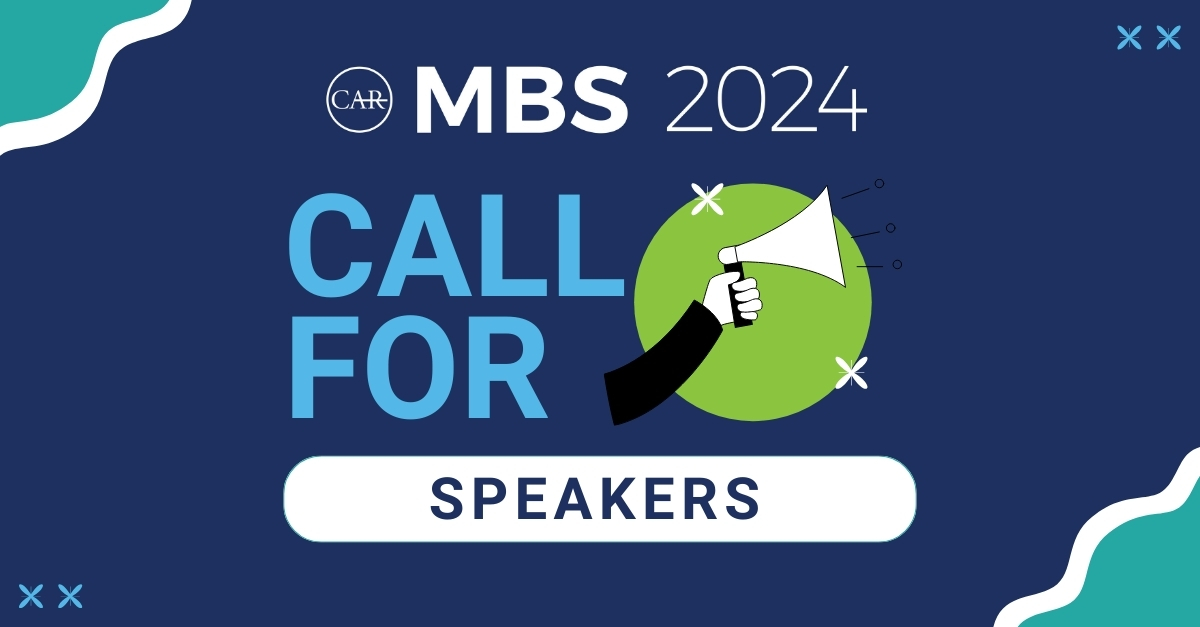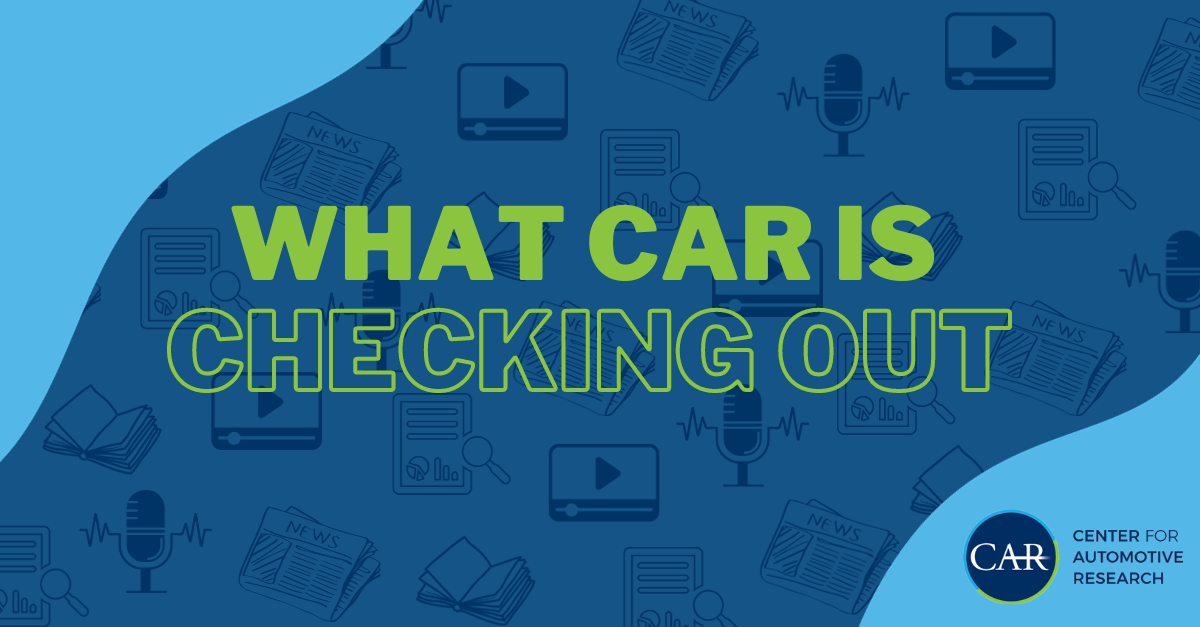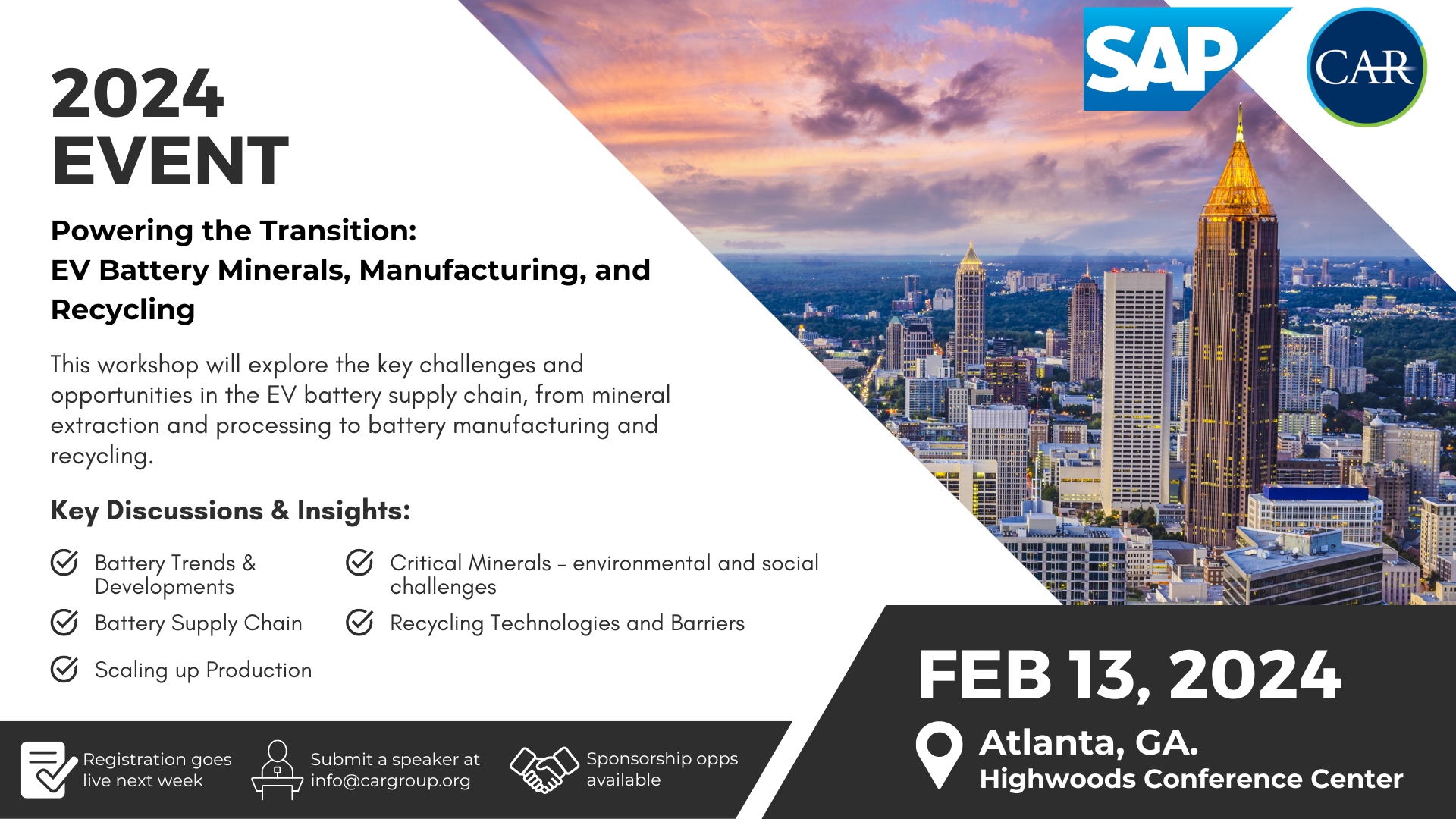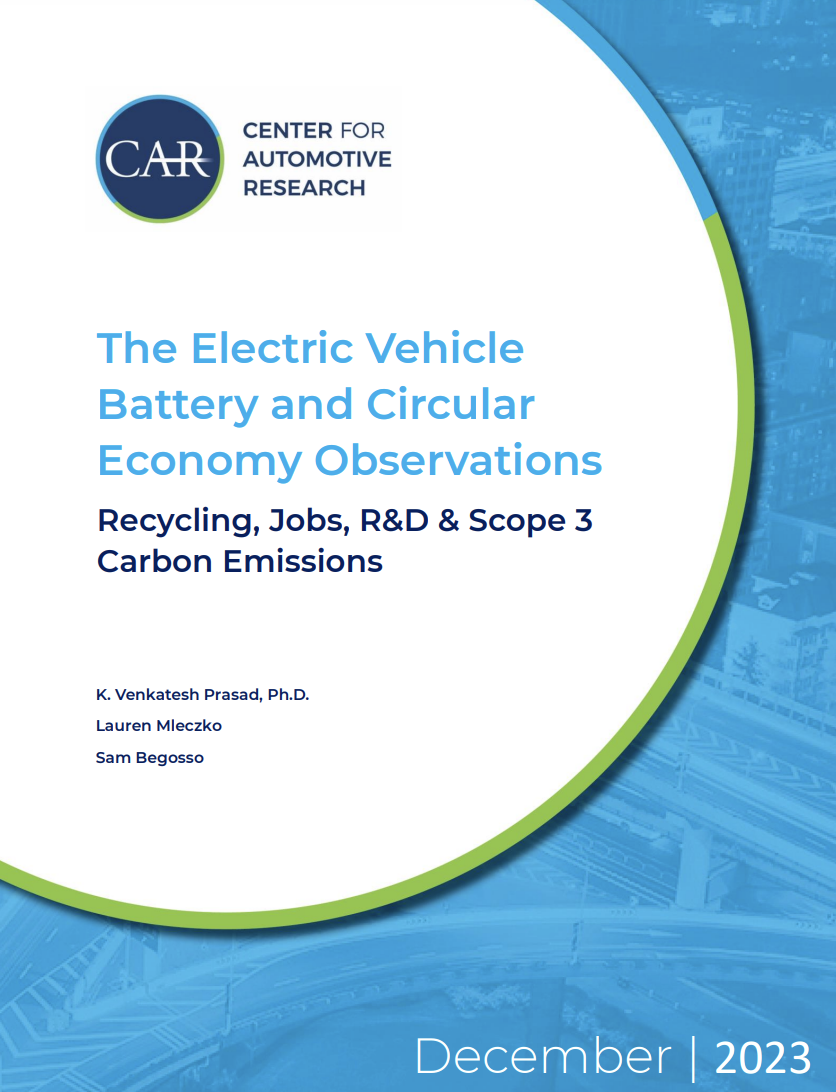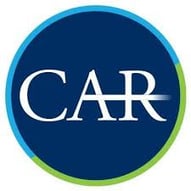
Read Our Latest Whitepaper
The Electric Vehicle Battery and Circular Economy Observations
Recycling, Jobs, R&D & Scope 3 Carbon Emissions
The concept of a circular economy for Lithium-Ion batteries (LiBs), along with its drivers, barriers and enablers has been studied recently (NREL 2021) with a view to inform public policy at the federal, state, and local levels and associated government initiatives and related goal setting. More recently, estimates on the monetary value generated per ton of battery recycling material have begun to appear [McKinsey2023], as private investors and public sector agencies look for strategic and operational guidance. At Center for Automotive Research (CAR) we have observed an accelerated investment in electric-vehicle (EV) assembly plants, EV LiB manufacturing and related research & development (R&D) in the North America–primarily in the United States (U.S.), followed by Canada and Mexico.

With the intention of looking ahead and informing automotive policy makers, investors, manufacturers and suppliers, and communities, including the state and local economic developers, CAR has summarized our initial observations in this whitepaper. We begin with an overview of the U.S. battery recycling plant locations and capacities, as they stand in mid-2023. This is followed by our observation of the U.S. market demand for battery recycling jobs, skills, and roles. Next, we outline the U.S. battery R&D outlay and then conclude with an early observation of the growing urgency to help the auto investors and communities with Scope 3 Reporting. Keywords: Circularity, batteries, Lithium-ion, recycling, emissions, Scope 3, electric vehicles, EVs, inflation reduction act, IRA.
| Download the Paper |

|












